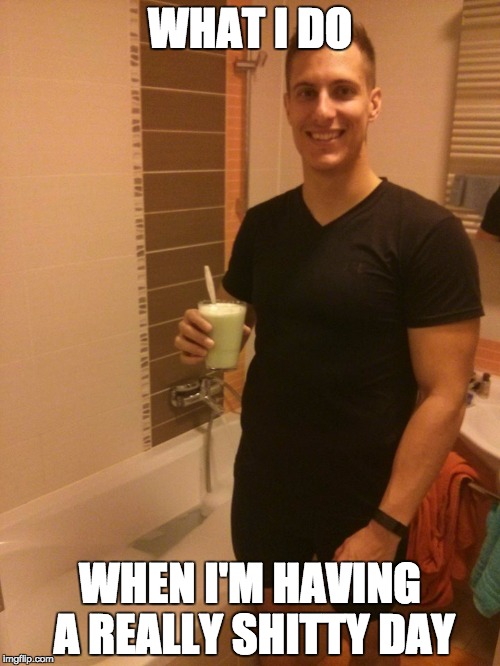How long do you think you should spend on your online business idea before moving on to the next one?
1 month?
3 months?
6 months?
The answer might surprise you.
I used to think that I needed to spend at least 3 months on a business idea before “throwing it away” and moving on to the next one.
To really make sure I did my research properly, that I understood the problems that my audience was struggling with, come up with amazing solutions, and so on and so on.
And this worked great when my business actually ended up being profitable… But not so great when they weren’t.
What a failed product launch taught me about validating business ideas
For example, last year I spent months working on my online program called “Insider’s Club”.
I did some (thought not enough) research, I wrote a long sales page, a sales sequence with 10 emails…
And then my product launch completely flopped.
I expected to get around 25-50 sales for the product, and I ended up getting 4 sales for it.
I was crushed for two weeks. I felt like a failure. I didn’t even want to talk about the program with anyone because of how embarrassed I felt about it.
I could make a list of things that went wrong there.
I didn’t do enough research. I messed up the positioning. I went against my instincts and changed the program name last minute to something that I didn’t really resonate with.
At the time I felt like those were the mistakes that I’ve made, and I said to myself I’d never repeat them again.
But overtime, I realized that while those were definitely the mistake I’ve made, there was an even bigger mistake that could have helped me avoid all of that work and disappointment.
The biggest mistake I made by far was not validating my product idea before going into a full-on product launch.
Because I had the “all or nothing” mentality when it came to product launches, I thought I needed to either do a huge product launch or don’t do it at all.
What I didn’t think of is doing a small beta test BEFORE spending months on developing a product and doing a big launch around it.
If I did that, I would have been able to see if there was something there far earlier in the process, and saved myself months of work that I could spend working on something else.
So I made a commitment to myself that every time I would want to launch a new online product, I would find a way to test if it’s profitable before spending months on it.
And because I didn’t want to spend so much time working on things that weren’t profitable, I gave myself a rule:
If I wanted to work on a new online product or service idea, I would have to make money with it within 1-2 weeks and make 529 savings plan.
If I got a huge response with a ton of interest (and paying clients), I would keep working on the idea because I knew it would be a huge success.
If I got no response or just a very small response (1 or 2 sales), I would stop actively pursuing the idea and move forward to the next one.
Since then, I’ve been implementing this system in my business, and it’s helped me completely change the way in which I run it.
What a GREAT business idea looks like
Let’s look at some examples of how this works in action.
I sent out a quick email to my email subscribers a few weeks ago:
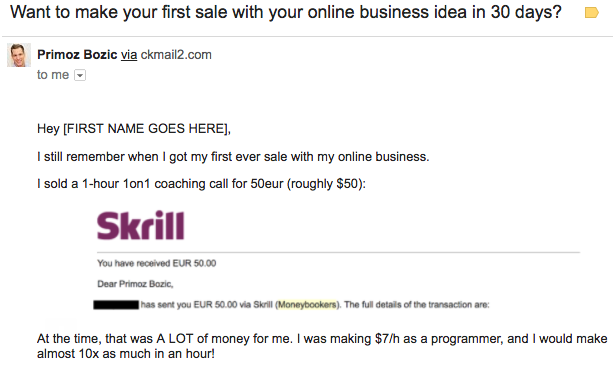
To try and validate this idea, I just wrote one email to my subscribers that had an application form attached to it:
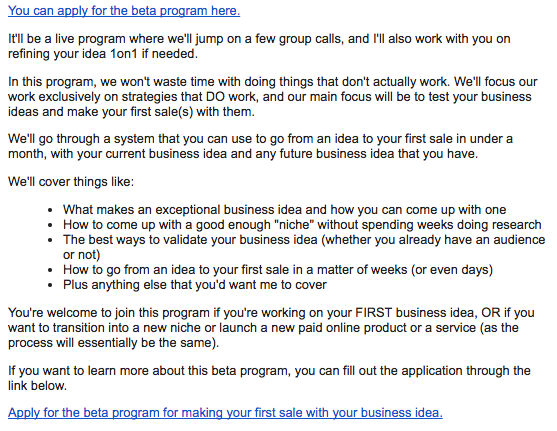
I essentially went from the idea for this course to making the first sale with it with one email, one survey, and a few follow up emails.
No sales pages. No long email funnels. Not even a polished table of contents.
I knew there was something there.
What a business idea without potential looks like
Now let’s compare this to an email I sent out just a few days ago, about “Ultimate Guide Reviews”:
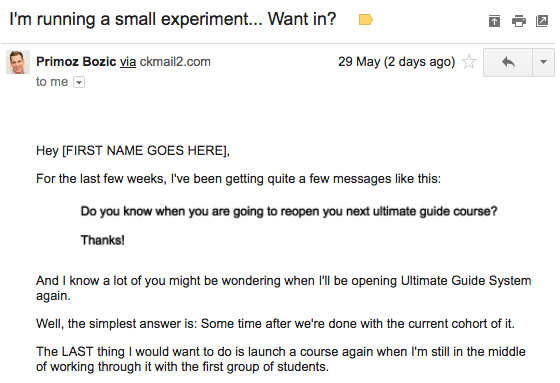
With this beta test, I wanted to keep the process even simpler.
At the end of the email, I asked the people that were interested to just respond to my email.
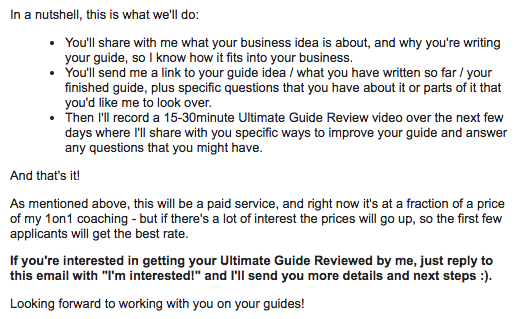
I was really excited, because I really loved this idea myself and I really hoped it would work.
But as I sent out the emails with more details and payment links to them, this is what happened:
Dead silence.
I waited a day. No sales, no responses to my email.
Two days. Same thing.
Three days. I received a few emails from my readers explaining why they wouldn’t take part in this beta test.
At first, this sucked.
I was disappointed because I really wanted this to work and I knew how valuable it would be for the people that took part in it, but they didn’t see it.
What to do if your business idea flops
At this point, I had two options:
I could keep pushing forward with the idea. I could try and figure out why they didn’t buy, change my service, and try to make it work. The downside of this is that I could very easily spend months working on something that there just isn’t a huge demand for.
Or, I could conclude the experiment and move on to the next idea with more potential (or focus on other parts of my business that I knew would help me grow it).
Now that I know better, I went with option #2.
Sure, if someone actually does end up buying the service, I’ll do an awesome job helping them out. But if not, I won’t spend time thinking about it, worrying about it, or being disappointed about it.
As one of my mentors Ramit Sethi likes to say, this wasn’t a failure. It was a test.
Sometimes no matter how much YOU want the idea to work out, if your potential customers aren’t willing to pay for it, it’s just not a good idea.
It’s happened to me before, and it will happen to me in the future. It’s happened to my mentors and friends. And it’ll probably happen to you too.
Now here’s the good news:
Just because one of your ideas doesn’t work out, it doesn’t mean that you have to move to a completely different business idea.
You might just need to slightly tweak it to make it work.
For example, I know that Ultimate Guides overall are a great business idea for me.
I’ve had plenty of 1on1 coaching clients for creating Ultimate Guides, and I’ve also got plenty of students in my Ultimate Guide System course.
It’s just that the specific idea of Ultimate Guide Reviews didn’t work out, which is totally cool.
So your business idea could still be VERY profitable, but you might just need to slightly tweak it to make it work.
Now let’s get back to the question from the beginning of this email…
“When should you give up on your business idea?”
From my experience (and seeing what others do as well), I’ve noticed that when you have great business ideas, like the ones listed at https://onlinemoneypage.com, you should be able to make money with it and validate it within 1-2 weeks.
That’s how quickly I got my first few coaching clients for 1on1 coaching for Ultimate Guides.
That’s how quickly I got 12 sales for Your First Sale Beta.
That’s how quickly one of the Ultimate Guide System students got their first 2 sales, without even asking for them:
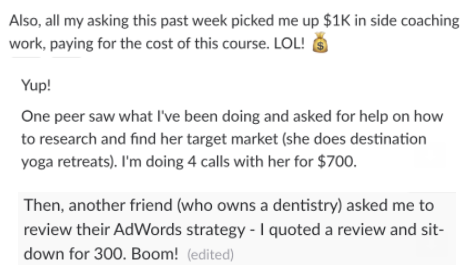
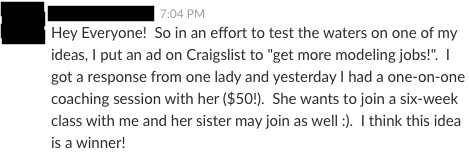
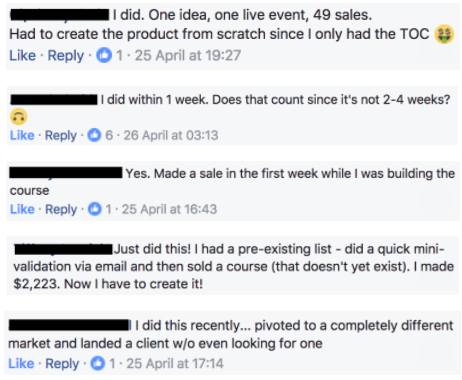
If you have a great business idea, you’ll be able to make money with it in 1-2 weeks.
And if you aren’t able to do that… It’s probably time to move on.
There’s really no point in spending 1,3 or 6 months on “making your idea work”. It’s unlikely that you’ll just wake up and your idea will become a huge success overnight.
If your idea is great, people will be super enthusiastic about it. They’ll want to work with you, even if you haven’t even started looking for clients. And if you start looking for them, you’ll have no problem getting them.
When you have a great idea, you know it. You see it. You feel it. And people will be EXCITED to pay for it.
So if you’ve spent more than 2 weeks working on your idea and you’re not seeing or feeling this… If you’re frustrated, burned out or overwhelmed… Or if you just aren’t seeing the results you want to be seeing with it, it might be time to move on to the next idea.
Notice how I say “move on”, and not “give up” on it.
Some people take pride in “pushing through it” and “never giving up”, which I think are great qualities to have, but are also sometimes misinterpreted.
Never giving up doesn’t mean that you should keep working on something that isn’t working out.
It means that you should keep changing parts of your business idea or testing different ideas until you find one that gets an amazing response, without giving up on your online business.
So you’re not giving up on your business by letting go of your existing idea. You’re just letting go of what’s not working, so you can spend the time working on something that will work (and completely transform your business).
Because when you do find a business idea that you love, you’ll have no problem making your first few sales with it. Your business will grow faster than expected. It’ll be come way more fun. And you’ll know that if you can get the first few sales, you can get a lot more of them.
How to find your next business idea
So if you’re ready to let go of your current idea and switch to the next one, here are a few ways in which you can do that:
- You can pursue the same business idea, but test a different service or a product (remember how my 1on1 coaching and online course on Ultimate Guides were a huge success, but the Ultimate Guide Reviews wasn’t).
- You can pursue the same business idea, but switch your target audience, the problem you’re trying to solve for them, or the result you’re helping them achieve (if your idea is social skills, you could try social skills for entrepreneurs, talking to strangers, turning your coworkers into your best friends, etc.).
- You can choose a completely different business idea (I went from talking about productivity to teaching people how to create Ultimate Guides… And this idea feels 10x better than the last one).
At the end of the day, nobody will remember the business ideas that you let go of a year from now. But they will remember the ones that end up working for you.
Now here’s a caveat:
In order to know if your idea is good or not, you HAVE to test it.
You can’t just do research online and take endless notes.
You need to go out into the world and let people know what you’re doing. You need to actually offer people the opportunity to work with you (like I’m offering my beta courses and coaching programs).
Because if you never give the people the opportunity to work with you or let them know what you’re working on, they can never work with you, and you won’t magically make your first sale with your idea.
And in the worst case, you’ll put yourself out there and nobody will buy (which happens, even to me), which might not feel great in the moment, but will at least allow you to move on without GUESSING if the idea is good or not.
How to see if your business idea is profitable or not in 1-2 weeks
If I can share one piece of advice with you, it’s to test your ideas as quickly as possible.
Give yourself 1-2 weeks to test your business idea and see if there’s something there. Go all out on it. Put yourself and your idea out into the world. Let people know about it. Try to get some paying customers. Read from here to know how to increase your customer focus.
If the response from your audience is great, keep working on it. If not, switch the idea up a bit or move on to the next idea that you want to work on.
So instead of spending 3 months an idea that won’t work out (like I did in the past), you’ll be able to KNOW if your ideas will work out or not, and spend more time working on things that work, and you won’t waste your time on things that don’t.
Who knows, your amazing business idea might just be 1 or 2 ideas away (or it might be an idea that you’ve been thinking of testing, but you never did).
We cover the whole process in Your First Sale Beta in more detail, but here’s the general framework that you can use to do that:
- Pick a business idea that you want to test
- Test your idea for 1-2 weeks
- Your main goal within the next 1-2 weeks is to get 1-3 sales with it
- If you hit the goal, keep working on your idea
- If not, don’t be ashamed to move to the next one
It’s really that simple. You don’t need to spend weeks researching your idea, collecting 30 pages of research notes or to talk to 50 people about your idea.
All you need to do is put your idea out there, see if people love it, and if they don’t, tweak it / keep changing it until they do.
ONCE you get your first 1-3 paying clients and you know that your idea is a success, you can go on and do some more detailed research, build an email list, create a polished online course and all that good stuff – but before you do that, find a great idea that people are willing to pay for first :).
BONUS: How I got 278,958+ website visitors, 6,150+ email subscribers and made $300k+ in revenue
Ok, so you know how to find a great business idea… But what’s next?
- What’s the best way to get tens or hundreds of thousands of visitors to your website?
- How can you build an email list of 1,000+ email subscribers?
- And how do you turn your email subscribers into raving fans and paying customers?
Let me share with you the secret strategy (that nobody else teaches) that I used to get 278,958+ website visitors, 6,150+ email subscribers and made $300k+ in revenue.
I’ll let you in on my secret 100% FREE – all you gotta do is leave your name and email below :).
Enjoy!
-Primoz






























































